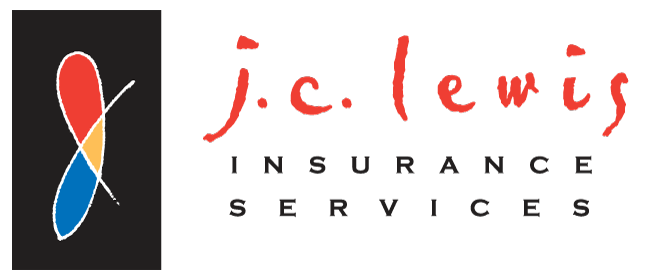In today’s competitive landscape, small businesses face numerous challenges, and managing the rising costs of employee health insurance is often a significant concern. This is largely due to the fact that providing health insurance is a significant financial commitment for small businesses. However, it is also crucial for attracting and retaining top talent, contributing to employee well-being, and fulfilling certain employer mandates. Finding the right balance between offering comprehensive coverage and managing costs can be challenging. What kind of costs are small businesses looking at? According to the Henry J. Kaiser Family Foundation (KFF) 2023 Employer Health Benefits Survey they are steadily increasing.
“Annual premiums for employer-sponsored family health coverage reached $23,968 this year, with workers on average paying $6,575 toward the cost of their coverage. The average deductible among covered workers in a plan with a general annual deductible is $1,735 for single coverage. Workers at smaller firms on average contribute $2,445 more toward the cost of family coverage than workers at smaller firms.” Fortunately, various strategies can help small businesses navigate the complex world of group health insurance and optimize their plans without compromising the quality of care offered to employees.
Small Business Health Insurance: Understanding Your Options
Before exploring cost-saving strategies, it’s vital to understand the different types of health insurance plans available to small businesses. Keep in mind, too, that if your business qualifies as small (fewer than 50 full-time employees and full-time equivalents FTEs), you are not required to offer coverage.
This is true both in Arizona and California, although the San Francisco Health Care Security Ordinance (HCSO) requires employers in the city of San Francisco, with 20 or more employees, to make minimum health care expenditures for their employees.
Essentially, the most common types of health coverage plans fall under these categories:
Preferred Provider Organization (PPO)
Offers a broad network of providers with varying out-of-pocket costs.
Health Maintenance Organization (HMO)
Requires choosing doctors within a specific network and often comes with lower premiums.
Point-of-Service (POS) plans
Combine features of HMOs and PPOs, offering network benefits with the option to see out-of-network providers for higher costs.
High-Deductible Health Plans (HDHPs)
Coupled with Health Savings Accounts (HSAs) where employees can save pre-tax dollars for qualified medical expenses.
The two most common plan types that the vast majority of employees are enrolled in are HMOs and PPOs. According to Healthcare.gov, these can be defined as follows:
- Health Maintenance Organization (HMO): A type of health insurance plan that usually limits coverage to care from doctors who work for or contract with the HMO. It generally won’t cover out-of-network care except in an emergency. An HMO may require you to live or work in its service area to be eligible for coverage. HMOs often provide integrated care and focus on prevention and wellness.
- Preferred Provider Organization (PPO): A type of health plan where you pay less if you use providers in the plan’s network. You can use doctors, hospitals, and providers outside of the network without a referral for an additional cost.
Strategies For Healthcare Costs Optimization
It is not secret that healthcare costs are relatively high and have, in most instances, continued to rise. According to HealthSystemTracker.org from Peterson-KFF, health spending totaled $4.5 trillion in 2022. This was three times the dollar amount from just two years prior in 2020. And it was almost 61 times the amount spent in 1970!
The good news is that there are strategic actions that businesses can take to help reduce and optimize their company’s healthcare costs.
- Shop around and compare quotes: Don’t simply renew your existing plan; seek quotes from multiple insurance companies and compare their offerings and pricing.
- Consider offering a combination of plan options: Provide employees with a choice between PPOs, HMOs, or HDHPs to cater to individual needs and budget preferences.
- Promote preventative care: Encourage employees to participate in preventative care screenings and wellness programs. This can help identify and address health concerns early, potentially preventing costly medical interventions later.
- Partner with a broker: Partnering with an experienced insurance broker can help navigate the complexities of the market, negotiate better rates, and secure the most suitable plan for your business needs.
- Implement wellness programs: Invest in employee well-being through programs like gym memberships, health fairs, or smoking cessation initiatives. These can improve employee health, potentially reducing healthcare costs in the long run.
- Review and update your plan regularly: The healthcare landscape constantly evolves. Regularly review your plan and consider adjustments based on employee demographics, utilization patterns, and cost trends.
- Explore alternatives to traditional insurance: Consider alternatives like Health Reimbursement Arrangements (HRAs) or Association Health Plans (AHPs) depending on your specific situation and eligibility criteria. However, thoroughly research these options to ensure they align with your needs and comply with regulations.
Beyond Costs Savings: Other Factors To Consider
While cost is a significant concern, prioritizing employee well-being and attracting talent shouldn’t be neglected. Consider these important factors, as well, when evaluating potential cost-saving strategies:
Network adequacy
Ensure the chosen plan offers access to qualified healthcare providers within a reasonable distance for your employees.
Benefits offered
Review the specific benefits offered by each plan, such as prescription drug coverage, mental health coverage, and maternity care, ensuring they meet employees’ needs.
Employee satisfaction
Conduct surveys to understand employee preferences and concerns regarding the health benefits package.
Value Means Savings But Also Quality For Money Spent
Balancing cost-effectiveness with quality coverage is crucial for small businesses when offering health insurance. By understanding your options, implementing cost-saving strategies, and considering employee well-being, businesses can find a suitable solution that fosters a healthy and productive work environment while staying within budget. Remember, consulting with an experienced insurance broker can provide valuable guidance throughout the process.
J.C. Lewis: Experience, Knowledge, And Guidance For Your Insurance Needs
Don’t navigate navigating the complexities of health insurance alone. Contact J.C. Lewis Insurance Services today for a free consultation. Our expert team will help you understand your options, choose the best fit for your business and employees, and ensure a smooth and ongoing process.
J.C. Lewis Insurance Services provides California and Arizona health insurance plans from leading health insurance providers that are fully licensed to operate within these states. So, whether you have inquiries about Small Group Insurance (1-50 Employees), the Small Business Health Options Program (SHOP), or any other concerns that an employer may encounter, you can trust us to guide you toward the ideal solution. Let us empower you to offer a valuable health benefits package and prioritize your employees’ well-being.



